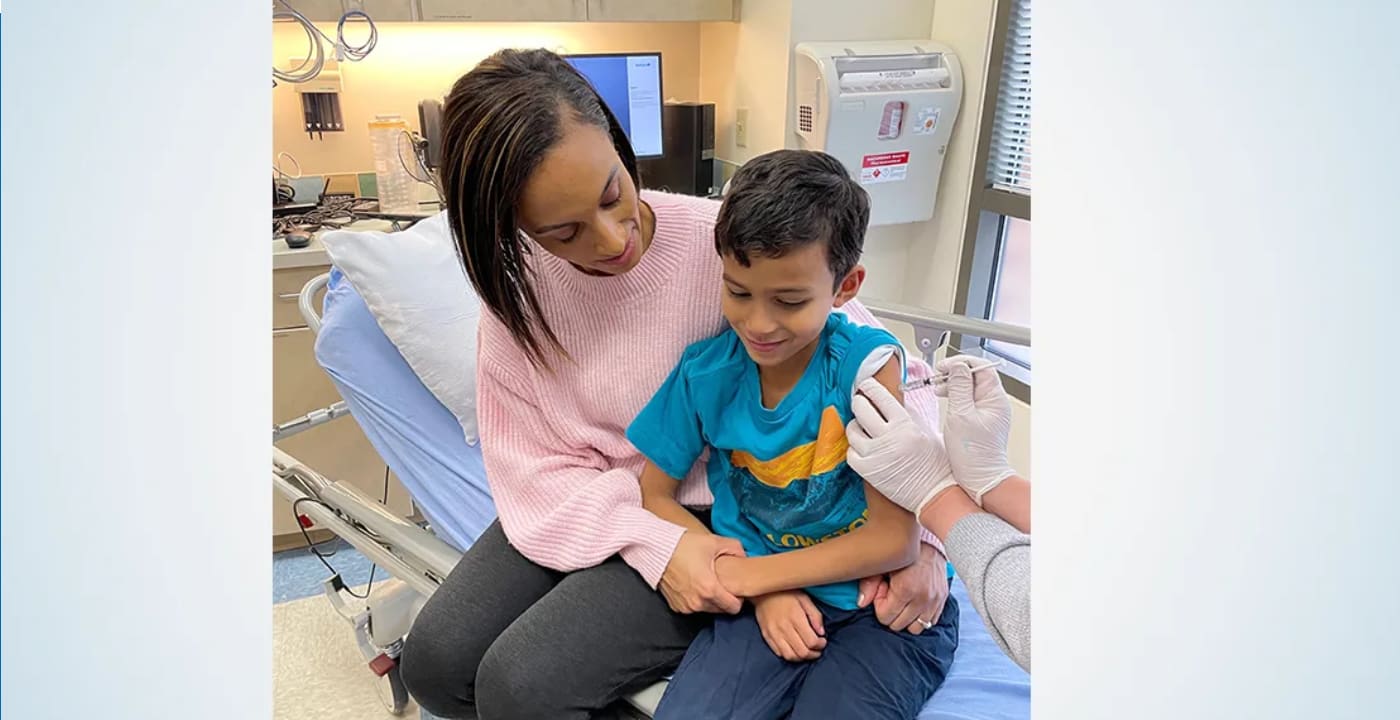Trips to the doctor can be scary: Child life specialists share tips to ease anxiety

Taking medicine, getting shots and seeing the doctor helps kids feel — and stay — better, but it’s not typically an easy, fun or painless process. To avoid feeding into your child’s fears, how can you help them with their anxiety about pain, discomfort or past experiences?
Child life specialists at Mary Bridge Children’s Hospital are experts at helping kids through medical appointments, procedures and not-so-happy times at the hospital. By using calming techniques, age-appropriate language, tools and distractions, these real-life superheroes can often help any patient through even the hardest of appointments and procedures.
March is National Child Life Month, so we asked our team of certified child life specialists to share some tried-and-true tips for parents and caregivers to use with kids during routine appointments or when access to a child life specialist might not be available.
Be honest
Your words matter. Kids engage in “magical thinking” and can be easily confused by things they hear, even if it’s not what you said. It’s important to be honest with your child about what they will feel, see, hear or experience at their appointment.
Use concrete and age-appropriate language and remember that you might need to repeat the information multiple times. Several helpful phrases for common procedures include:
Procedure words and phrases to use
Vaccine: A quick poke; medicine through a small needle; feels like a pinch; only lasts for a few seconds
Blood draw: A check to see how your body is doing; checking to see what is making you feel sick; a quick poke; feels like a pinch
Swab or culture: Cotton or Q-tip that touches inside your nose or throat to check what is making you feel sick
EKG: Stickers that are put on your body and are connected to strings to check your heart
Validate feelings and offer appropriate choices
It’s normal to feel scared or anxious, and it’s OK for kids to express how they feel. Instead of telling your child not to be scared or to be brave, tell them it’s OK to be scared but that you will be with them, and their doctors are helping them to feel better.
When possible, offer children appropriate choices. They can’t choose if they’re getting a shot, but they can choose if they’d like it in their right or left arm (or leg). They can’t choose if they need a cast, but they can choose the color of the cast.
Practice at home
One of the tools child life specialists use frequently in the hospital is pretend play. Using dolls or toy doctor’s kits can help, especially with younger children.
Practicing comfort positions — special ways adult caregivers can securely hold a child during a procedure — is also helpful to practice at home. Lying flat on the back is one of the most anxiety-provoking positions and lends the least amount of control, so comfort positions like back-to-chest or side sitting can be beneficial and provide additional calming for kids, whether they’re receiving shots, getting their ears checked or having their vitals taken.
Distraction helps
At the appointment and when there is waiting involved, distraction can be a helpful way to help kids stay calm. Some favorite distraction tools child life specialists use include:
- Seek-and-find books
- Stress balls or fidget toys
- Video or music players
- Singing or counting
- Playing a round of I Spy
Ask questions and seek pain management aids
There is power in asking questions, especially when it comes to medications and pain management. Helpful questions include asking your pharmacist if the medication is available in a formulation most supportive to your child — whether that is liquid, chewable tablet or flavored.
Other questions that can be helpful — and that your child can ask themselves — include whether they can choose the color of their bandages, if they can push the syringe themselves or if they can choose the flavor of their medicine.
For pain management, especially with shots, ask about Buzzy™, ShotBlocker or cold/warm compresses, which can often reduce the sting.
Stay calm and offer praise
Kids can feed off parents’ fears and anxieties. Remember that some days or appointments will be harder than others, but try to remain positive and do your best to stay calm.
Encourage kids by praising their accomplishments at their doctor’s appointments, letting them know you’re proud of them for doing their best. If it’s a particularly difficult appointment, acknowledge that difficulty and remind your child that it is OK to feel the way they do.
Mary Bridge Children’s offers child life services at no cost to patients in its Tacoma outpatient clinics and inpatient units. This service is made possible thanks to generous community donations. Learn more and make a difference today.




